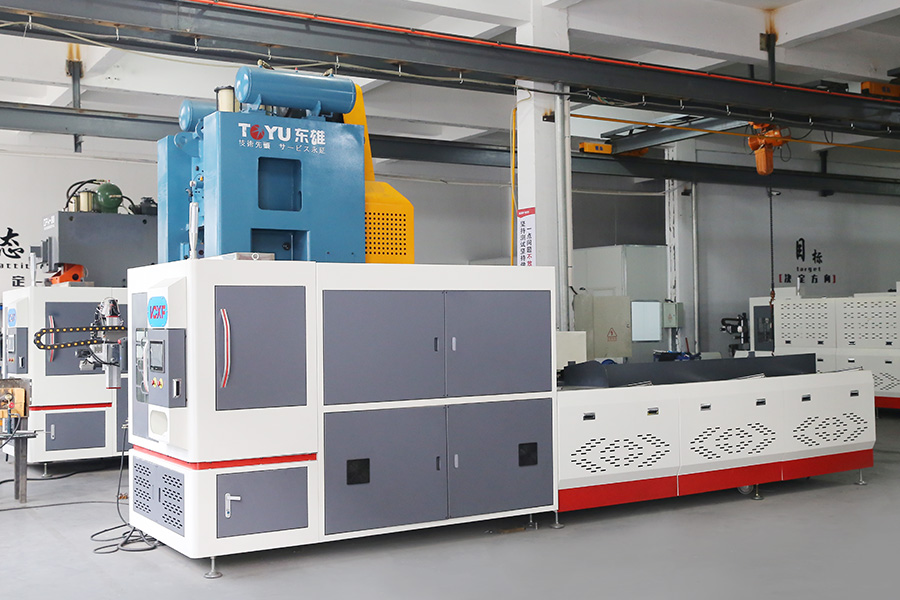80T/125T Fully Automatic Hot Forging All-In-One Machine
This equipment has an exquisite appearance and is highly integrated: it integrates feeding, heating,...
View MoreWith the advent of digital and intelligent tools, hot forging processing technology has experienced significant changes in recent years. Among these, artificial intelligence (AI) is transforming how manufacturers approach the hot forging process, bringing about higher precision, faster response times, and more consistent output.
Traditionally, hot forging involves forming metal under harsh temperatures and pressure. While this process has proven effective, it historically relied on manual judgment or basic automation to adjust parameters like temperature, die force, and cycle time. With AI integration, these decisions are now guided by real-time data, machine learning models, and predictive algorithms that help prevent errors before they happen.
How AI Enhances the Hot Forging Process
Real-Time Data Monitoring and Control
One of the more powerful capabilities AI offers is the ability to monitor every stage of the hot forging process in real time. Sensors embedded in forging equipment continuously collect data such as:
Die temperature
Pressing force
Billet temperature
Cycle duration
Lubrication condition
AI systems analyze this data instantly to detect anomalies, optimize settings, and adapt the process parameters on the fly. For instance, if a temperature drop is detected during billet heating, AI can trigger adjustments to maintain good forging conditions and avoid defects.

Predictive Analytics and Process Optimization
AI doesn’t just react—it predicts. Based on historical process data, AI models can forecast outcomes like:
Tool wear and failure risks
Material deformation behavior
Dimensional deviations
Product consistency based on raw material variations
With these insights, operators can make proactive decisions, such as scheduling maintenance before breakdowns occur or fine-tuning the die temperature to match a specific batch of raw material. The result is improved uptime, lower scrap rates, and fewer quality issues.
Key Benefits of AI Integration in Forging
1. Increased Dimensional Accuracy
AI-driven control systems help maintain tighter tolerances by dynamically adjusting machine parameters, ensuring consistent part geometry even in long production runs.
2. Reduced Material Waste
Through continuous learning, AI systems can minimize over-forging, reduce flash formation, and ensure material is deformed efficiently—resulting in less scrap and better yield from each billet.
3. Improved Energy Efficiency
By fine-tuning heating profiles and eliminating unnecessary reheating cycles, AI helps lower energy consumption without compromising product quality.
4. Higher Throughput with Fewer Defects
With fewer human errors and better control of critical forging variables, AI allows for faster production cycles and higher first-pass yield rates.
Challenges and Considerations
While integrating AI into hot forging processing technology offers clear benefits, manufacturers should also be prepared for certain challenges:
Initial setup cost: Upgrading equipment with sensors and AI-compatible software requires upfront investment.
Data management: Large volumes of sensor data need to be collected, stored, and managed securely.
Skilled workforce: Operators and engineers must be trained to work with AI tools and interpret system outputs.
System calibration: Machine learning models need time to “learn” good conditions, especially in complex or multi-variable environments.
Despite these hurdles, the long-term advantages—both operational and financial—outweigh the initial complexity.
At Taizhou Huanlian Technology Co., Ltd., we are actively embracing these smart technologies. Through independent R&D, collaboration, and innovation, we aim to deliver forging solutions that balance precision, productivity, and sustainability—helping manufacturers meet the demands of a modern industrial world.